From the northern hub of Hanoi with side trips to Sapa and Ha Long Bay, we began making our way down Vietnam to the next destination: Hue!
The old imperial capital of the mighty centenary ruling Nguyen Dynasty, Hue was home to several emperors and also the site of some major battles during the Vietnam war. We came to Hue hungry for both knowledge and food (read more about the unique food here!). Since most of the main historical sites are far away from the city boundaries, we opted for one of the cheap tours ($12) our hotel offered. The tour covered the Imperial Citadel, Thien Mu Pagoda and three emperor tombs, everything we wanted to see.
Imperial Citadel
Hue’s Imperial Citadel served as the emperors’ home throughout the centuries. Protected by a moat and a wall, it was built with feng shui in mind – facing the river to the east, the direction of life, with mountains to its west, for protection.
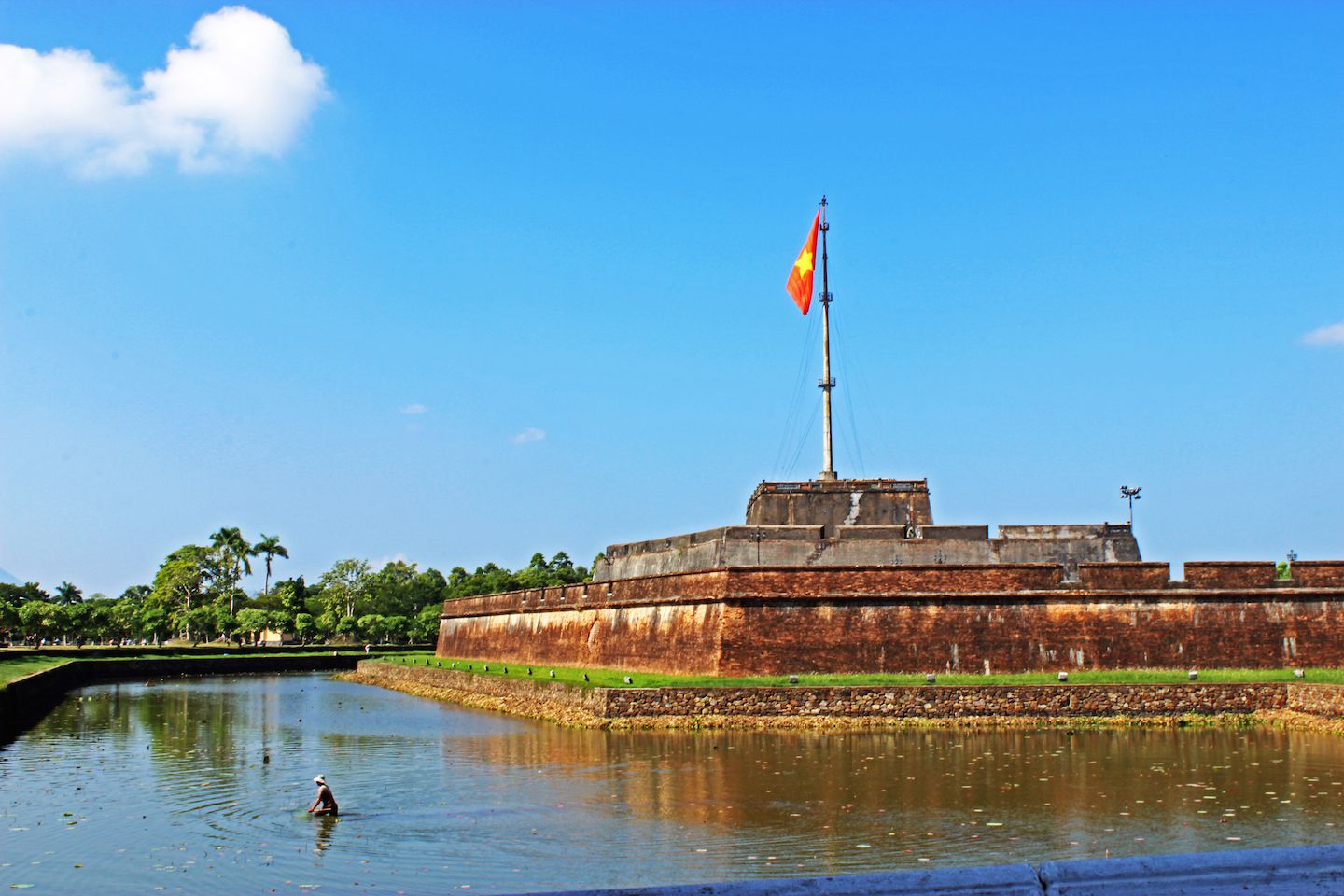
Inside the citadel was the royal Purple Forbidden City, similar to the Forbidden City in Beijing. Nowadays, only 25% of the original city is still standing, as the rest was destroyed during the Vietnam War. So even though the area was huge, there wasn’t that much to see. It was a shame that the war destroyed so many lives as well as so much culture and history.

The original buildings served as home and office to the emperor, his family, and high court officials. It was also a place for worshipping divinities and praying at the many temples.
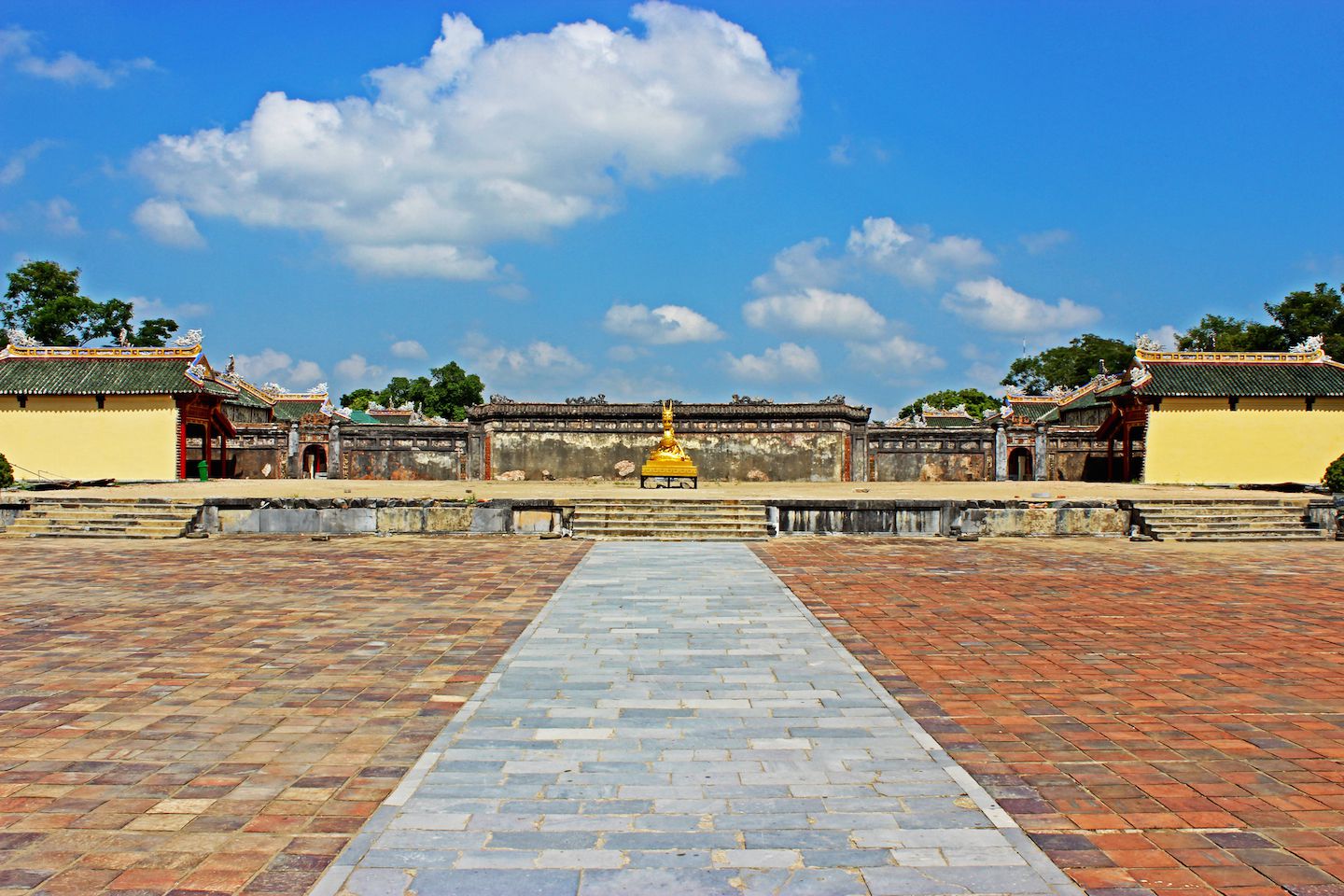
Thien Mu Pagoda
Legend says that an old lady called Thien Mu, meaning “Celestial Lady”, dressed in red and blue, would sit at the site and cast her prophecy. The prophecy said that a lord would come to that site and build a pagoda on the hill to pray for the country’s prosperity. Hearing the prophecy, lord Nguyen Hoang built the Thien Mu pagoda, the tallest religious building in the whole country. It is believed that the “Celestial Lady” spirit still haunts the site at night. Spooky!
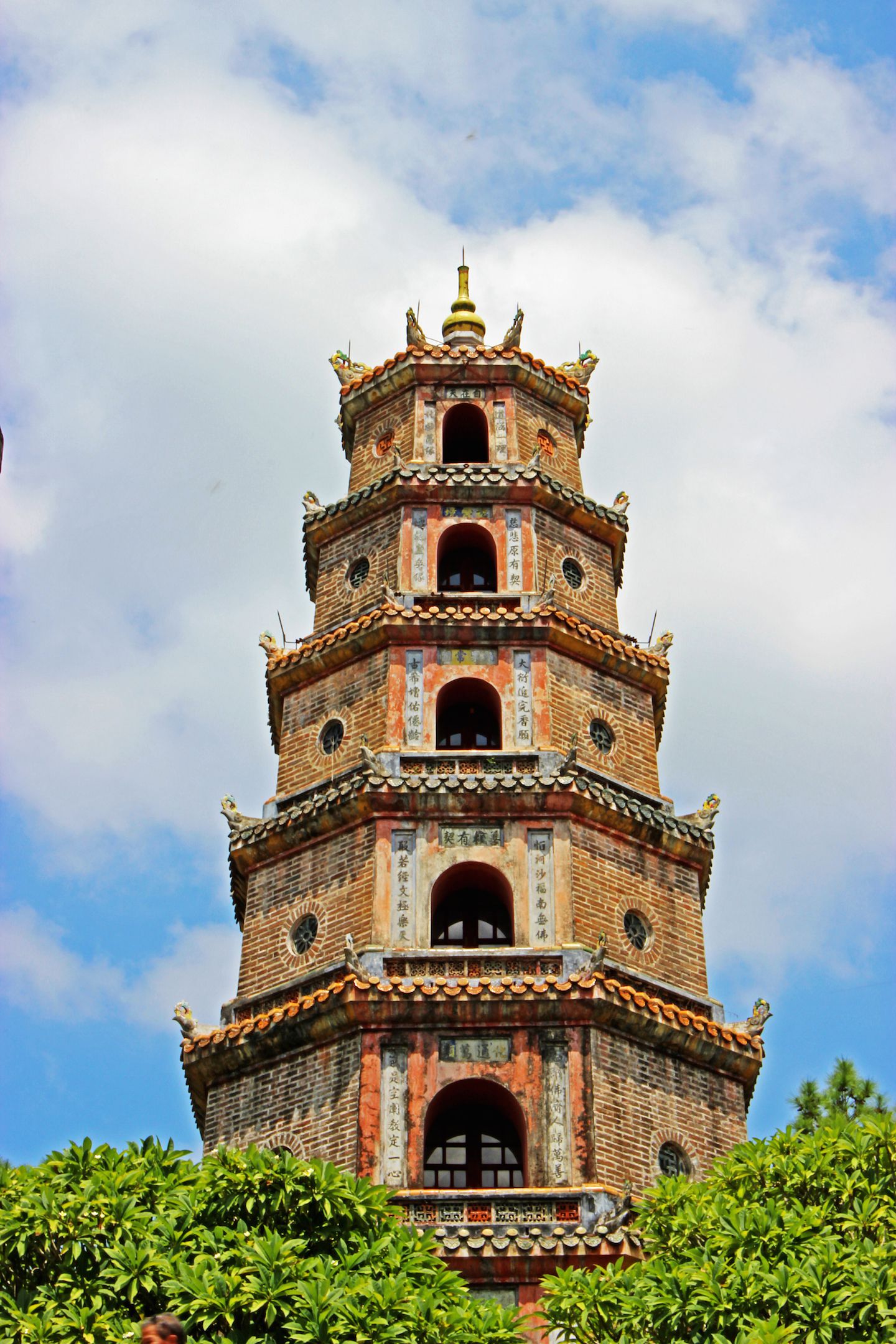
Tomb of Emperor Tu Duc
The most beautiful of all the tombs, the tomb of Emperor Tu Duc had many ponds and buildings inside its walls, arranged in a way to resemble the whole body of Emperor Tu Duc when viewed from above, with the head being the grave.
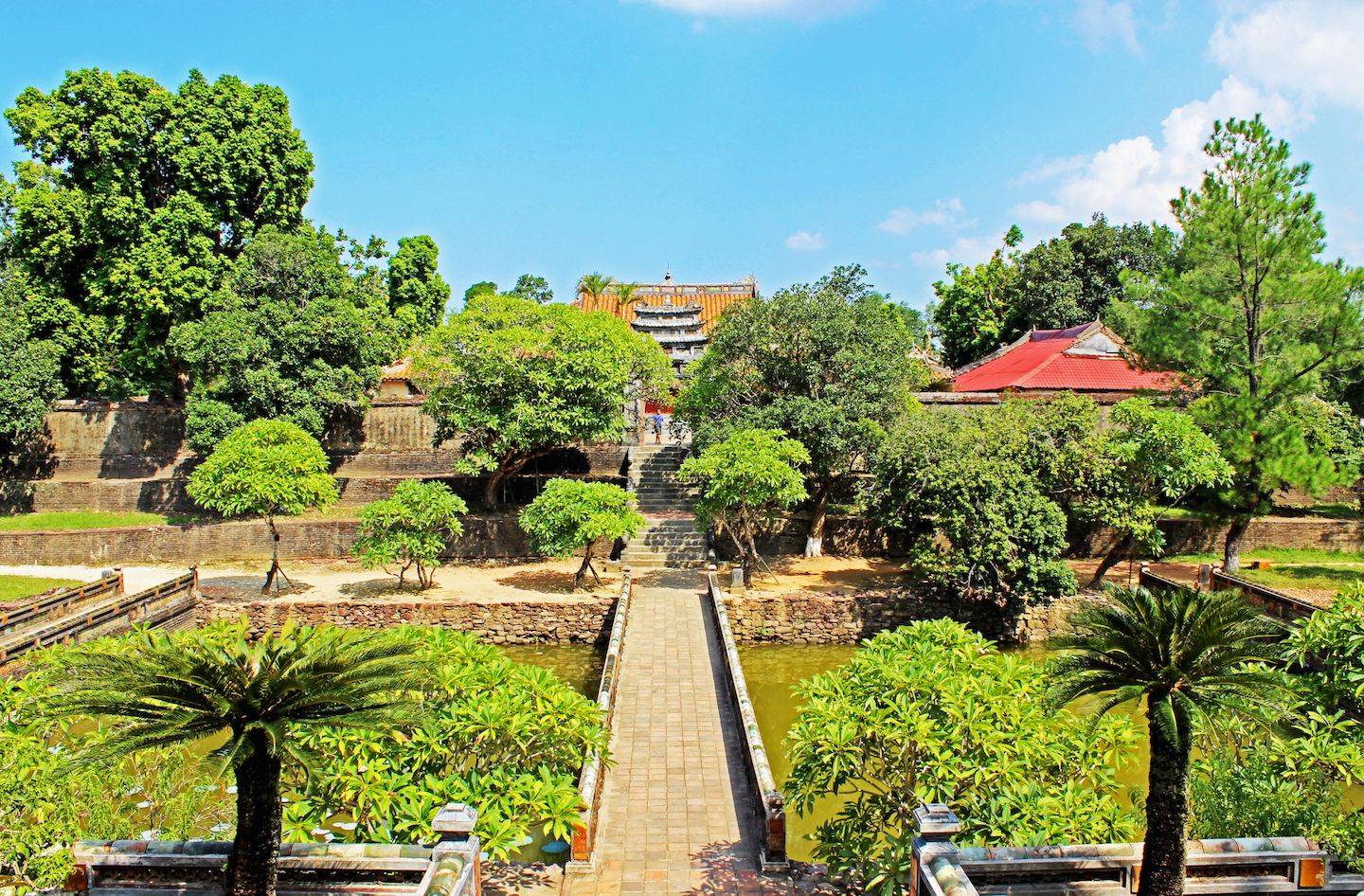
To quote our guide: “not even if you had enough money could you get something like this nowadays”. He was right. The tomb had a special historical and sacred atmosphere.
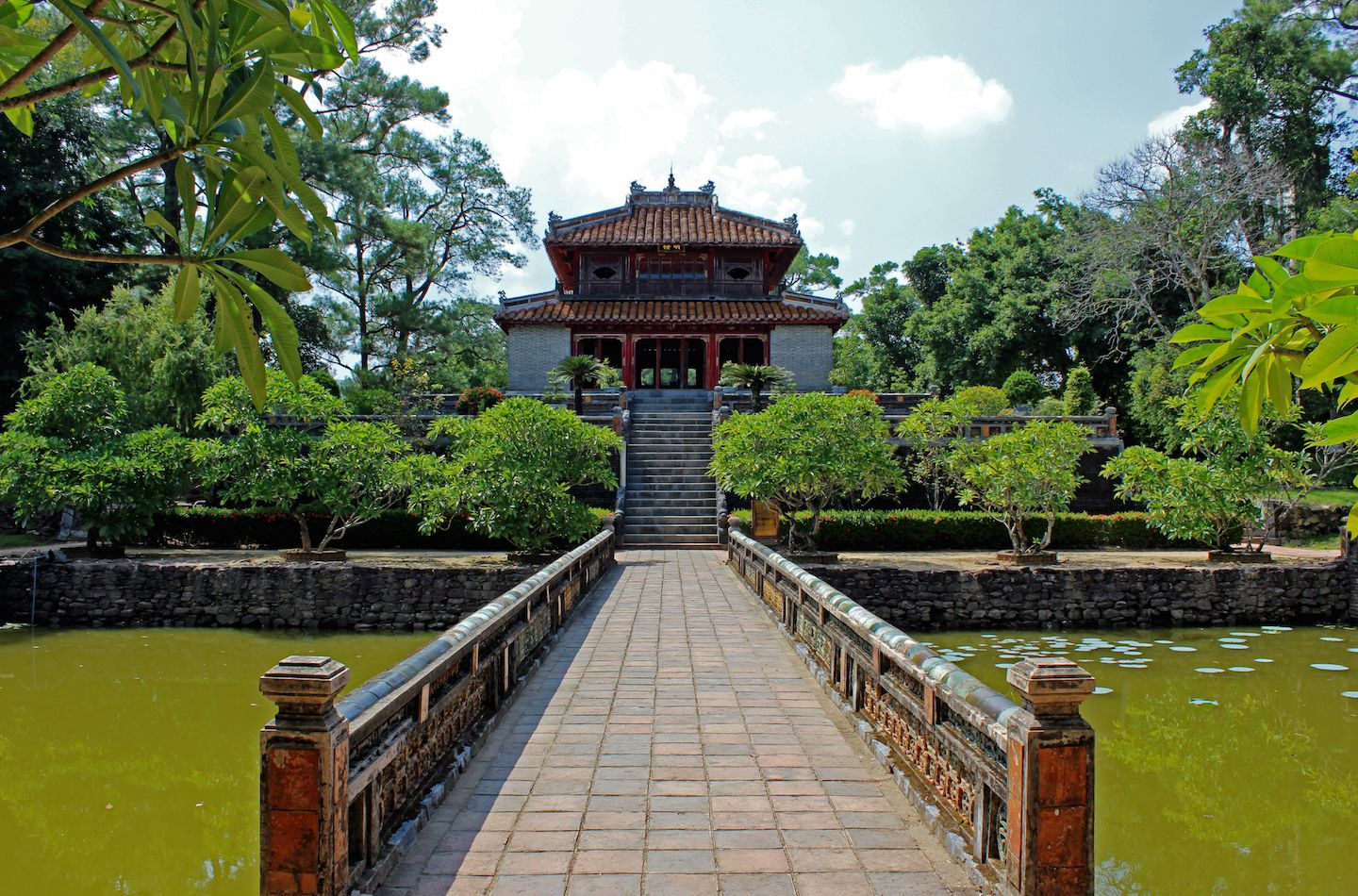
Even though the “head” is the grave, the actual emperor’s body and the location of his treasures were unknown, said to be anywhere within the tomb’s grounds. Emperor Tu Duc chose to do this in order to prevent his entire tomb from being raided. What a smart man.

Tomb of Emperor Khai Dinh
The most extravagant of all the tombs, the tomb of Emperor Khai Dinh was also a monument. Like a mountain, the tomb is high off the ground, with steep steps leading up to it. On the way, statues of mandarins and soldiers guard the tomb.

At the time of construction, Khai Dinh’s popularity fell, due to the massive amounts of money and labour used during the 11 years it took to build the tomb. He supposedly imported concrete from France solely for the purposes of building this tomb. No wonder the people started hating him – it sounded a lot like Louis XVI.
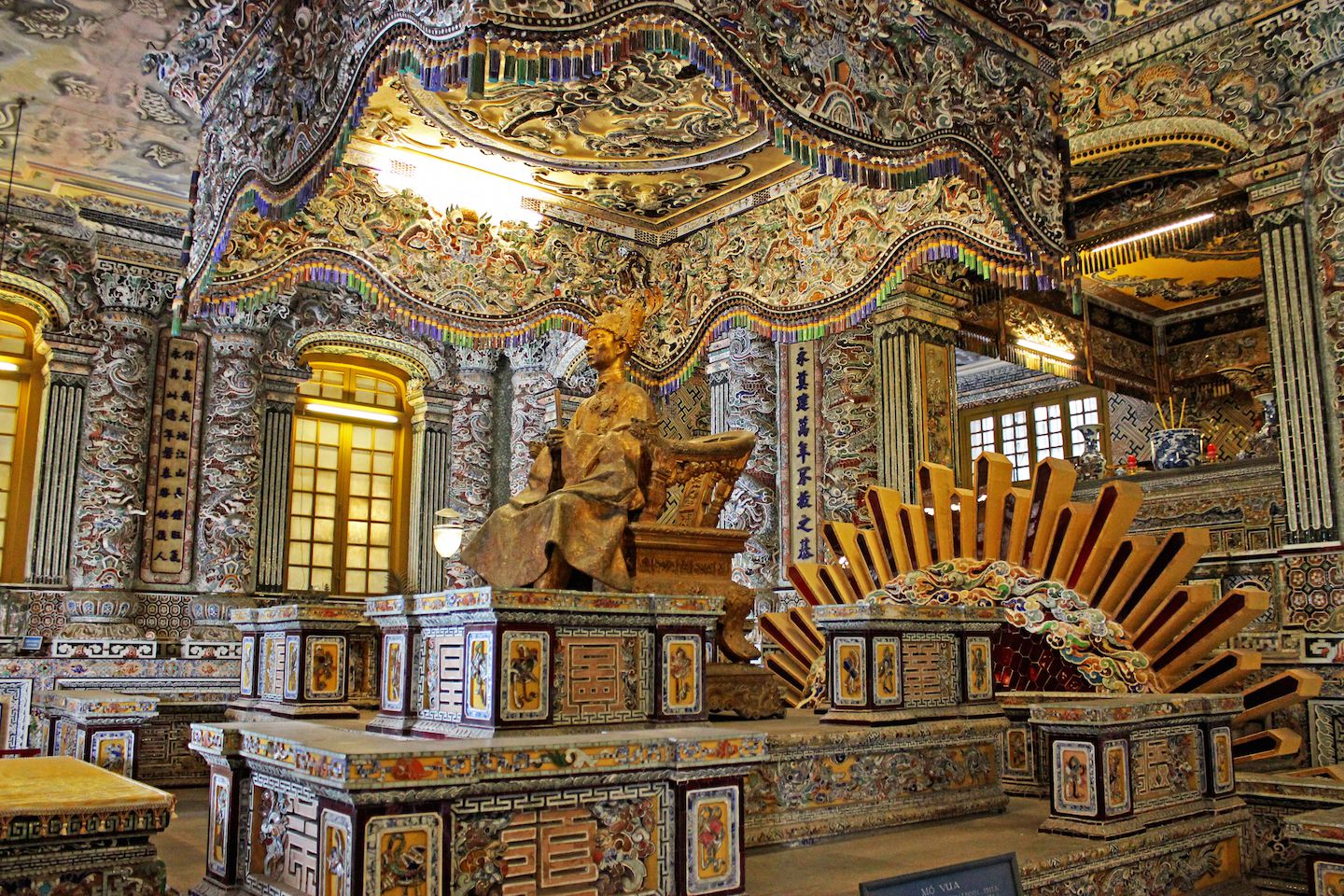
Tomb of Emperor Minh Mang
This Chinese-style tomb was a bit like both the previous two, as it embodied the nature-manmade harmony of the tomb of Emperor Tu Duc, as well as the majesty and monumental sights of the tomb of Emperor Khai Dinh.

With over 18 hectares of lakes, gardens and temples, it was a grand project that employed over 10,000 people during its construction, from workers to artists. Much of the tomb had ongoing restoration, but there were nonetheless enough corridors and enclosures to walk through to get a sense of the place.

Hue was a very historical city and all the royal constructions were certainly worth a quick visit. It was a great opportunity to appreciate the history and architecture of the Nguyen Dynasty. For more pictures, please visit the gallery!
Tour Side Notes
We didn’t have very high expectations for the tours. Something we’ve learned in Vietnam is that you get a lot for the extra buck; however, we were honestly just looking for transportation between places and settled for the cheap tour, knowing things could go downhill at any point.
The bus picked us up at our hotel in the morning. No complaints there, it was a big, air-conditioned, and relatively comfortable bus. It was pretty much full already, but everyone had a seat. So far so good. Within five minutes of the bus ride, just as soon as our guide asked for the entrance fee money (which we were forewarned that it wasn’t included in the tour price), three people immediately defected the tour, and left the bus arguing with the guide.
Upon arrival at the Imperial Citadel, a young Russian lady (probably in her mid 20’s) with her two kids (probably around 5 and 7 years old) started screaming and getting into a very heated argument with our tour guide, claiming that she didn’t need the stupid tour and they would do it themselves. All while the rest of us stood on the street awkwardly trying not to stare. She rejoined the group eventually.
What we learned from the Russian lady was what not to do as a parent. She had no control over her kids, allowing them to do anything, from peeing on the streets to licking the shared spoons used in the buffet lunch. Instead of teaching her son how to patiently wait until it was his turn to look at the menu, she engaged in tug of war and hand hitting with him. It was kind of upsetting to watch because children don’t know any better and need good role models.
Besides all of that, the rest of the tour went fine and our guide actually spoke English quite well, which can be a crapshoot when it comes to cheap tours. All in all, how a tour turns out is almost as dependent on your expectations as the tour itself.
